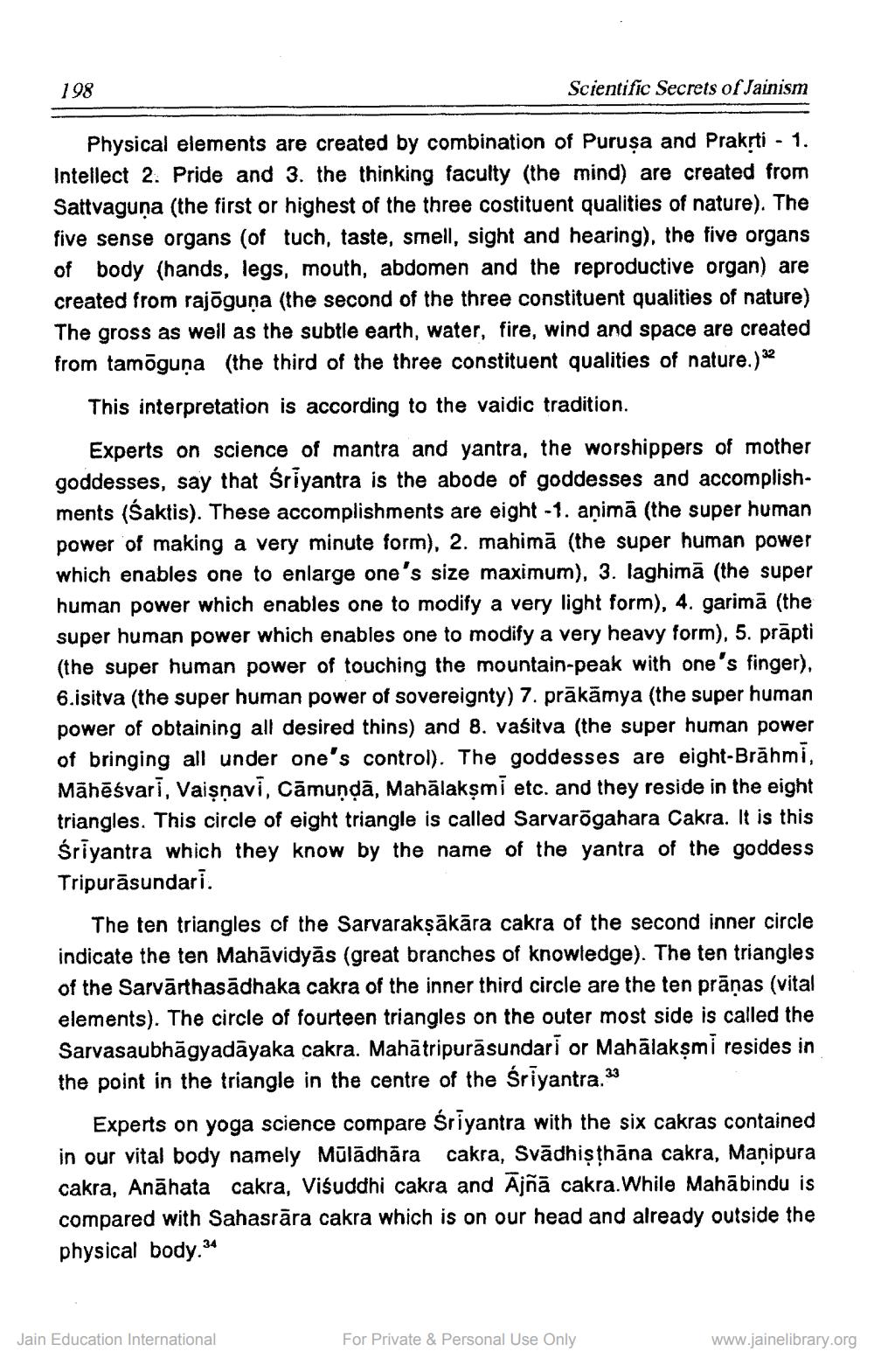________________
198
Scientific Secrets of Jainism
Physical elements are created by combination of Puruşa and Prakrti - 1. Intellect 2. Pride and 3. the thinking faculty (the mind) are created from Sattvaguna (the first or highest of the three costituent qualities of nature). The five sense organs (of tuch, taste, smell, sight and hearing), the five organs of body (hands, legs, mouth, abdomen and the reproductive organ) are created from rajõguna (the second of the three constituent qualities of nature) The gross as well as the subtle earth, water, fire, wind and space are created from tamöguņa (the third of the three constituent qualities of nature.) 22
This interpretation is according to the vaidic tradition.
Experts on science of mantra and yantra, the worshippers of mother goddesses, say that Sriyantra is the abode of goddesses and accomplishments (Śaktis). These accomplishments are eight - 1. animā (the super human power of making a very minute form), 2. mahimā (the super human power which enables one to enlarge one's size maximum), 3. laghimā (the super human power which enables one to modify a very light form), 4. garimā (the super human power which enables one to modify a very heavy form), 5. prāpti (the super human power of touching the mountain-peak with one's finger), 6.isitva (the super human power of sovereignty) 7. prākāmya (the super human power of obtaining all desired thins) and 8. vasitva (the super human power of bringing all under one's control). The goddesses are eight-Brāhmi, Māhēśvari, Vaisnavi, Cāmundā, Mahālakṣmi etc. and they reside in the eight triangles. This circle of eight triangle is called Sarvarõgahara Cakra. It is this Śriyantra which they know by the name of the yantra of the goddess Tripurāsundari.
The ten triangles of the Sarvarakṣākāra cakra of the second inner circle indicate the ten Mahāvidyās (great branches of knowledge). The ten triangles of the Sarvārthasādhaka cakra of the inner third circle are the ten prāņas (vital elements). The circle of fourteen triangles on the outer most side is called the Sarvasaubhāgyadāyaka cakra. Mahātripurāsundari or Mahālakṣmi resides in the point in the triangle in the centre of the Sriyantra. 33
Experts on yoga science compare śriyantra with the six cakras contained in our vital body namely Mūlādhāra cakra, Svādhisthāna cakra, Manipura cakra, Anāhata cakra, Viśuddhi cakra and Ājñā cakra. While Mahābindu is compared with Sahasrāra cakra which is on our head and already outside the physical body. 34
Jain Education International
For Private & Personal Use Only
www.jainelibrary.org




